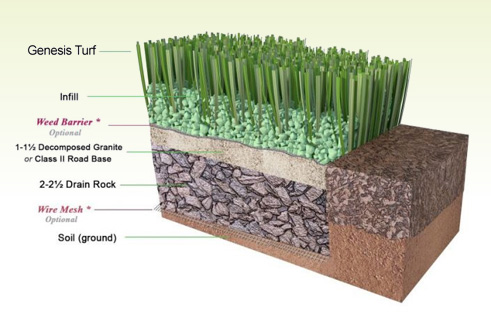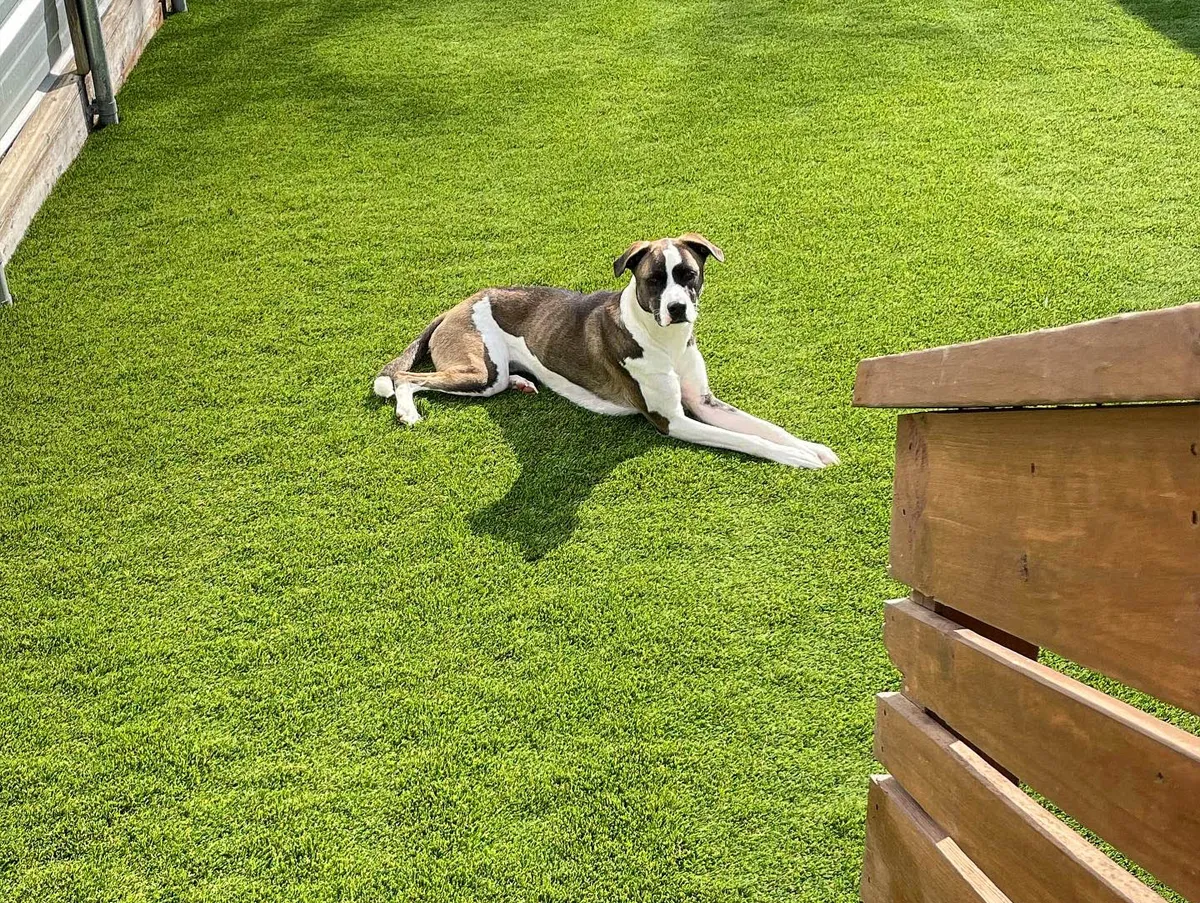Find the Leading Turf Installation Phoenix AZ Solutions for Your Home or Business
Find the Leading Turf Installation Phoenix AZ Solutions for Your Home or Business
Blog Article
Delve Into the Environmental Perks of Opting for Synthetic Grass Solutions
The fostering of synthetic turf solutions presents an engaging chance to address pushing environmental difficulties. By significantly minimizing water usage and lessening the application of dangerous chemicals, these options not only promote lasting landscaping yet likewise protect neighborhood ecological communities. The reduced carbon impact connected with decreased maintenance tasks contributes to a much more sustainable method to land monitoring. The effects of these benefits extend past simple conservation efforts, elevating inquiries about their lasting influence on habitat preservation and general ecological balance. Discovering these dimensions exposes a complicated interaction worth thinking about.
Water Conservation Perks
Among one of the most significant benefits of synthetic grass is its ability to conserve water. Standard turf yards need considerable watering, particularly in locations susceptible to dry spell or water limitations. On the other hand, synthetic grass does not require watering, significantly reducing the total need for water resources. This function is especially useful in deserts where water deficiency is a pushing worry.
By getting rid of the need for normal watering, synthetic grass contributes to lasting landscape techniques and aids mitigate the ecological influence of extreme water intake. Furthermore, the preservation of water reaches the decrease of overflow, which can result in dirt disintegration and waterway contamination.
Furthermore, the installation of man-made grass enables districts and home owners to allocate water sources more effectively, focusing on necessary usages such as alcohol consumption water and agriculture. The change towards synthetic grass not just advertises liable water usage however additionally straightens with more comprehensive environmental goals focused on protecting natural sources.
As areas significantly focus on sustainability, the water preservation advantages of synthetic lawn provide a compelling situation for its fostering in business and household landscaping jobs.
Decreased Chemical Usage
The transition to synthetic grass substantially reduces the reliance on chemical treatments typically utilized in natural grass upkeep. Traditional turf management generally involves the application of pesticides, herbicides, and fertilizers to advertise growth and control insects. These chemicals can pose threats to human health, local wild animals, and the atmosphere, adding to dirt and water contamination.
In contrast, synthetic grass gets rid of the need for these harmful substances. As soon as set up, it requires very little upkeep, mainly including routine cleaning and seldom infill replenishment. This reduction in chemical usage not just benefits the instant atmosphere but additionally contributes to more comprehensive environmental stability. By minimizing the launch of synthetic substances into the ecological community, synthetic grass advertises healthier soil and water systems.
Furthermore, the absence of chemical overflow connected with synthetic grass installments helps secure neighborhood waterways from air pollution, sustaining marine life and maintaining biodiversity. Phoenix turf companies. As areas significantly prioritize sustainable methods, selecting fabricated grass presents a practical option that straightens with environmental preservation objectives. Via this change, homeowner can enjoy lush eco-friendly areas without jeopardizing ecological wellness, leading the means for an extra lasting future
Lower Carbon Footprint

In addition, the installment of synthetic grass can lead to considerable water preservation. All-natural grass need substantial quantities of water for watering, which not just includes in the carbon footprint related to water removal and therapy however likewise stress neighborhood water sources. In comparison, man-made turf requires marginal upkeep, needing no watering, thus substantially decreasing water use and its associated power expenses.
In addition, the longevity of synthetic grass adds to its decreased carbon effect. With a lifespan of approximately 15 years or even more, the requirement for regular replacements is decreased, leading to less waste and reduced power usage in production and getting rid of conventional turf alternatives. On the whole, synthetic grass presents a lasting choice for environmentally aware landscaping.
Environment Preservation
Environment conservation is a critical factor to consider in the discussion over landscaping selections, especially when comparing synthetic grass to natural grass. All-natural turf lawns usually require extensive upkeep, including using pesticides, herbicides, and plant foods, which can adversely impact local ecological communities. visit this site These chemicals can leach right into the soil and waterways, harming native vegetation and fauna and interfering with local habitats.
Synthetic grass gets rid of the requirement for hazardous chemicals, consequently protecting nearby wildlife and maintaining the honesty of bordering ecosystems. The installation of artificial turf can lead to the conversion of previous grass locations right into even more biodiverse landscapes, such as pollinator gardens or native plant areas, which can support neighborhood wild animals.
Eventually, the change to fabricated lawn not just saves water and reduces maintenance efforts yet additionally promotes a much more unified connection between human activities and the natural surroundings, promoting habitat preservation while doing so.
Long-Term Sustainability
Lasting sustainability is a critical aspect in examining the advantages of artificial lawn over standard lawn lawns. One of one of the most considerable benefits of synthetic grass is its durability; it can last approximately 15-20 years with very little maintenance, whereas natural grass calls for regular reseeding and replacement. This long life decreases the requirement for consistent resources, such as water, plant foods, and pesticides, which are important for maintaining a healthy and balanced grass yard.
Additionally, fabricated grass contributes to a decrease in carbon emissions related to lawn treatment devices. Traditional yards frequently call for gas-powered mowers, leaners, and blowers, all of which add to air pollution. Phoenix turf companies. In contrast, man-made turf gets rid of the demand for such devices, advertising a cleaner setting
Furthermore, the manufacturing of synthetic grass increasingly uses recycled try this out materials, improving its sustainability account. As suppliers adopt green practices, the environmental footprint of man-made grass continues to decrease.

Verdict
The fostering of synthetic turf options presents substantial environmental advantages, consisting of considerable water preservation, decreased reliance on hazardous chemicals, and a lower carbon impact. Furthermore, fabricated turf aids in preserving natural environments by reducing land disruption and promoting lasting sustainability with the usage of resilient products. Collectively, these factors highlight the possibility of synthetic grass to add favorably to ecological wellness and offer a practical choice to traditional landscaping techniques in an increasingly resource-conscious world.
In comparison, fabricated lawn does not require watering, substantially lowering the overall demand for water resources. By lessening the release of artificial compounds into the environment, artificial turf promotes healthier soil and water systems.
Moreover, the setup of man-made lawn can result in significant water preservation. In comparison, artificial turf needs minimal maintenance, requiring no watering, thereby considerably minimizing water usage and its connected energy costs.

Report this page